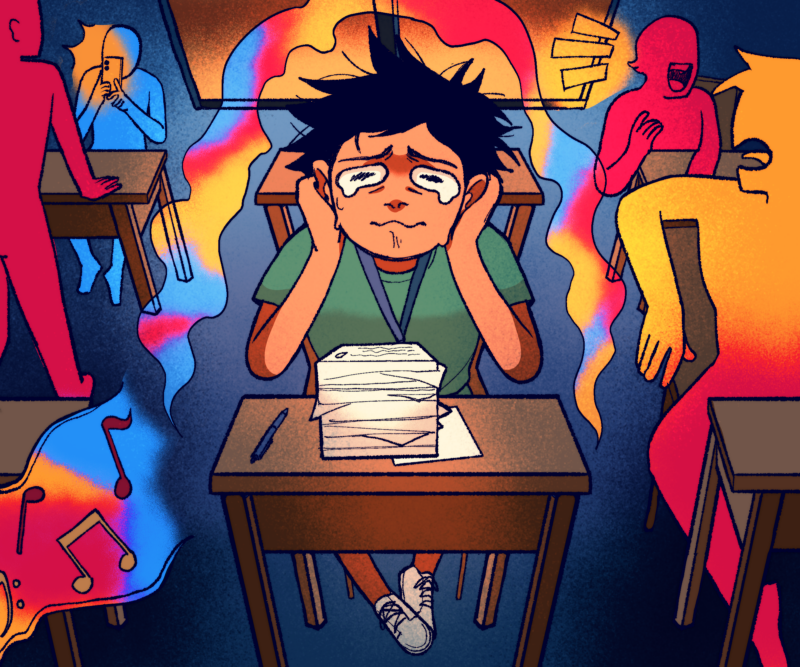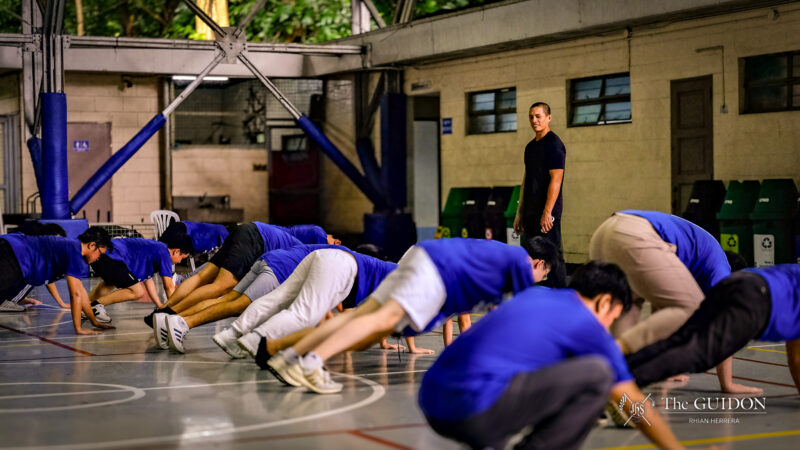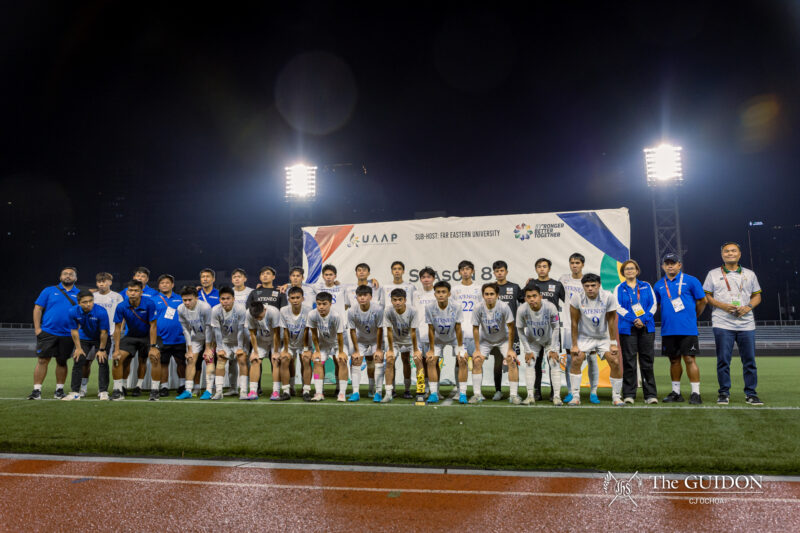If you are a recent alumnus of the Loyola Schools, you are probably one of three things: pleased that you got a pretty nice yearbook on time, or unimpressed because, although your yearbook still came out quite early, its quality was rather disappointing, or just plain infuriated for still not having yours even after three to four years since graduation.
But this story is not unheard of; it’s one that periodically comes up just to cause alumni much frustration and disappointment. In fact, the graduates of 2009 are the only odd ones out of the recent Loyola Schools graduates; the team in charge of producing their batch’s Aegis delivered and delivered quite well.
It’s not that happy a story for the other recent batches. The class of 2010, for example, has had to content itself with a yearbook that was—despite having a relatively early release date—widely criticized for all its avoidable flaws and the questionable decisions and choices made by its editorial board.
And then there are, of course, the classes of 2006, 2007, and 2008. These batches still don’t have their yearbooks to this day.
Problems and delays
Aegis, the official yearbook of the Loyola schools, has been published since 1930. Ateneo actually had yearbooks prior to that, but it was only during that year that the annual was christened with its current name.
Ever since its conception, Aegis has been made to encapsulate in a few volumes each graduating class’ days in the Ateneo. It is made every year by a team comprised of volunteers from the senior batch. Compared to other student organizations, Team Aegis, thoese in charge of yearbook production, enjoys much independence.
The latest yearbook, Aegis 2010, had been beset by a lot of problems and flaws, both logistical and content-wise. The Editorial Board planned to release all copies to the graduating batch during Blue Roast, the annual send-off party for the seniors, but problems with the publisher contracted by Team Aegis 2010 resulted in a shortage of copies.
Still, according to Team Aegis 2010 member Chaley Tiu (BS CTM ‘10), even though copies ran short initially, they still got to release the rest of them last May.
“Even though there were problems with releasing during Blue Roast, I am proud to say that we got the copies out, unlike the other batches,” she says, referring to recent Aegis teams which still haven’t released their yearbooks, years since the supposed due date.
The latest yearbook, though, has also been criticized for problems other than distribution. According to Miguel Villaroel (BS LM ‘10), some people who submitted write-ups for their yearbook page saw a quote taking its place instead.
“And there are also some pages which are discolored; that’s another problem,” he says.
Mae Quijano (BS Bio ‘10) pointed out more errors. “There were a few people [whose yearbook entries were] printed twice,” she says. “Then a friend of mine said that there was this one guy who was included with the Health Sciences people when he’s from [the School of Social Sciences].”
For Angelo Julian (BS CTM ‘10), the yearbook felt rushed. “I hoped that they just fixed all the little problems,” he says. “Like, number one: though the pages were okay, some pages weren’t cut at all.”
“Some features were not included—like for the group pictures, not all were there,” he continues.
Julian also asks: “Why were the creative shots all put into a CD? I expected more, although overall the output was great.”
On a more positive note, the fact that the Aegis was released quite early was something to be happy about for Quijano. “I love the fact that I got the yearbook super fast, but in a way, I think it was rushed,” she says.
“I could’ve happily waited for another year or so, if it meant the yearbook was near-perfect … [but] I still actually applaud the yearbook people for getting it done fast,” she explains.
“So many of my friends and relatives from upper batches are still whining about not having theirs.”
Senior syndrome
“[You may have] volunteered, but it’s also part of your responsibility to get the job right,” supersenior Bryant Go says.
But putting himself in the shoes of Team Aegis members, he adds, “I think that since you’re graduating, there’s pressure to fix your grades, to have a good résumé, and of course you also have to find a job.”
“Since it takes the whole year to put Aegis together, it would be very hard to balance all of those, and that’s why it would be understandable that there are mistakes [in the yearbook].” he explains.
In defense of Team Aegis 2010, though, Christopher Castillo, director of the Office of Student Activities (OSA), says: “In all fairness to [the team], it really is hard for anyone who volunteered [to take the task] when no one else wanted or cared to do it, and get blamed [when problems arise]. They took the time—even with all the stress that senior year can bring—to do the best they can.”
Production process
According to Sassy Guerrero, editor-in-chief of the relatively successful Aegis 2009, the production of their batch’s yearbook “involved handling the entire batch’s photos, write-ups, and the research on [its four years in college].”
Guerrero says that Team Aegis 2009 even had to research and write about Ateneo history, as part of their special feature on the Ateneo sesquicentennial.
All Aegis teams, however, roughly follow the same production process. According to Castillo, the operations of the yearbook can be classified into six stages: conceptualization, presentation, pictorials, editing, printing, and releasing.
Still, despite Aegis’ independence, Castillo says that all these stages “are under the supervision of [Associate Dean for Student Affairs (ADSA)] Rene San Andres.”
“The budget is discussed with OSA, ADSA, Alumni Relations, and the Sanggunian, with progress reports given regularly to ADSA,” he says.
Castillo says that the payment for Aegis is already part of the tuition of the graduating senior. “What [the graduating students] are actually paying for is just [the fee for the actual yearbook]. So, for other expenses like the pictorials, additional payments will be asked by the Aegis Editorial Board.”
However, the Aegis is not a requirement for graduation. “The student still gets the choice to opt out of getting the yearbook and get the necessary deduction from the tuition fee,” Castillo says.
Nevertheless, students who opt out of buying still have the option to join the graduation pictorials and to submit a write-up for the yearbook.
Proper direction
Asked whether focused moderation and less independence could do the trick for Aegis, Castillo says that such a system will not necessarily improve the production process.
“Moderation should be limited to minimal intrusion into the inner workings. You should figure out how to solve problems on your own,” says Castillo.
For others meanwhile, more moderation is needed. “I suppose more moderation by the ADSA would be better, but I don’t really think it’s necessary to reform the way Aegis works,” says Quijano.
“Moderation won’t hurt; it could even give proper direction,” according to Julian.
Legacy
For Guerrero, “[Aegis is] an organization that should become more visible to everyone on campus, not just to the graduating batch.”
“It’s the organization that preserves the memories that would remain even after everyone has left,” she says.
As such, as part of the efforts of Team Aegis 2009, a Legacy Team was established. This team would focus on accurately recording the events that each batch becomes a part of from OrSem to Graduation.
Aegis has been around for close to 80 years, but its record as a publication only serves to prove that age does not equal skill. Perhaps it can also be blamed on the lack of continuity; after all, an entirely new Team Aegis is assembled every year.
Team Aegis 2009’s establishment of a Legacy Team might be a step forward in this regard. Still, it remains to be seen whether future Aegis teams can effectively employ such contributions of teams past, and whether they can actually, and finally, learn from old errors and mistakes.
Editor’s note: Aegis 2010 Editor-in-Chief Denise Marino declined a request for an interview.







fuck denise marino!